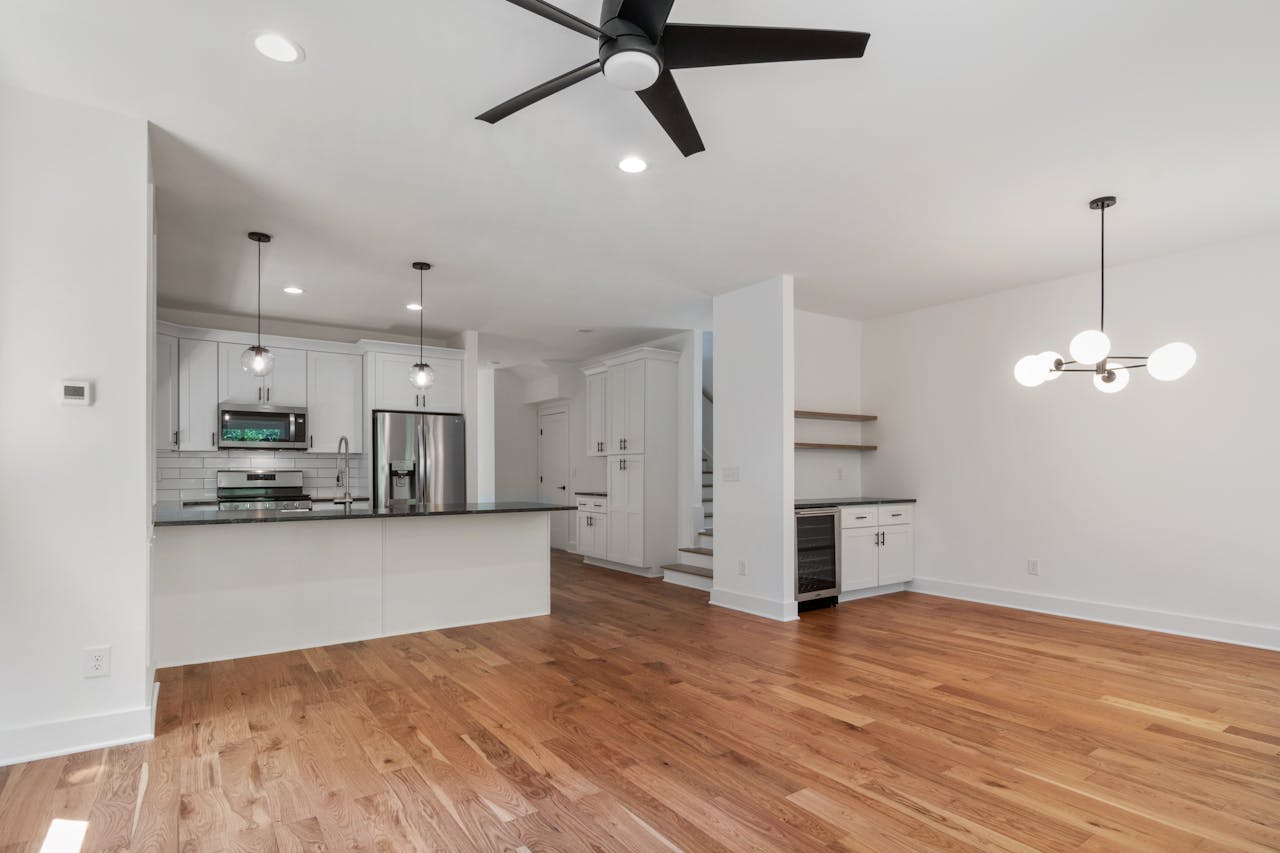The kitchen is the heart of any home, and it deserves as much attention to detail as any other room. By creating a well-ventilated kitchen, you not only improve the quality of air in your home but also enhance your cooking habits, leading to better health.
The Importance of Kitchen Ventilation
Kitchen ventilation is often overlooked as an insignificant part of kitchen design, but its impact on both your cooking habits and health can be profound.
Topic to read : How to set up a DIY smoothie station in your kitchen for quick, healthy meals?
Ventilation is all about removing unwanted odors, heat, and potentially harmful gases from your kitchen. Cooking produces steam, smoke, and greasy fumes, which can contain harmful pollutants. Without proper ventilation, these pollutants can linger in your kitchen, leading to an unhealthy and potentially hazardous environment.
A well-ventilated kitchen can improve your health in numerous ways. Breathing cleaner air can help to prevent respiratory problems and allergies. Also, it can make your cooking experience more pleasant, encouraging you to cook more often, and therefore eat healthier.
Topic to read : What are the most effective ways to use a kitchen timer for meal prepping?
How Ventilation Improves Your Cooking Habits
By improving the ventilation in your kitchen, your cooking habits can change for the better.
A kitchen filled with smoke and odors can make the act of cooking stressful and unpleasant. You might be more likely to rely on quick, processed meals or takeout, rather than cooking fresh meals at home.
By contrast, a well-ventilated kitchen provides a more comfortable cooking environment. This can inspire you to spend more time in the kitchen, experimenting with new recipes, and cooking healthier meals.
Furthermore, good ventilation can also keep your kitchen cleaner. Greasy fumes can stick to your kitchen surfaces, making them harder to clean. But with effective ventilation, these fumes are drawn away, keeping your kitchen surfaces cleaner for longer.
Choosing the Right Ventilation System for Your Kitchen
The choice of ventilation system can drastically affect its effectiveness.
You may have heard of kitchen hoods or exhaust fans, but the world of kitchen ventilation extends far beyond these familiar fixtures. Ductless range hoods, downdraft vents, and whole-house ventilation systems can all contribute to a healthier kitchen environment.
When choosing a ventilation system, consider the size and layout of your kitchen, your cooking habits, and your budget. For example, if you cook regularly and have a large, open-plan kitchen, a powerful range hood may be the best option.
Remember to maintain your ventilation system regularly. Filters need to be cleaned or replaced regularly to keep the system working effectively.
The Impact of Ventilation on Indoor Air Quality
Good kitchen ventilation directly improves the air quality in your home.
Cooking can release a range of pollutants into your home, from carbon monoxide to nitrogen dioxide. These pollutants can contribute to indoor air pollution, which can have serious health effects such as asthma, allergies, and other respiratory issues.
By extracting these harmful pollutants, the ventilation system improves the overall air quality in your home. This is particularly important in homes with open-plan designs, where kitchen air can easily circulate to other parts of the house.
However, ventilation alone is not enough to ensure good air quality. You also need to consider other factors, such as the type of cooking fuels you use and the materials used in your cookware and kitchen fittings.
The Role of Ventilation in Energy Efficiency
While you might think that good kitchen ventilation would increase your energy use, it can actually improve your home’s energy efficiency.
Heat and humidity from cooking can make your home warmer and more humid, leading your air conditioning system to work harder to cool it down. By removing this excess heat and humidity, a good ventilation system can help to reduce your cooling costs.
Moreover, modern ventilation systems are designed with energy efficiency in mind. Look for models with energy-saving features, such as variable speed fans and heat recovery systems, to maximize your energy savings.
In essence, the connection between kitchen ventilation and your health is quite direct. A well-ventilated kitchen means cleaner air, and cleaner air has a positive effect on your health. At the same time, the joy of cooking in a comfortable, odor-free kitchen can encourage healthier eating habits. So, it’s time to give your kitchen the attention it deserves, and invest in better ventilation.
Maintaining Your Kitchen Ventilation System
Maintaining your kitchen ventilation system is crucial for its optimal performance.
Your kitchen ventilation system works tirelessly to extract unwanted pollutants and odors from your kitchen. Over time, the filters can become clogged and the system’s performance can deteriorate, leading to a decrease in air quality. Regular maintenance is, therefore, key to ensuring that your kitchen remains a healthy and pleasant environment to cook in.
Maintenance encompasses a variety of tasks, including cleaning the filters, checking the ductwork for any blockages, and replacing any worn-out components. How often you should carry out these tasks depends on the type of system you have and how often you use it. As a general rule, filters should be cleaned or replaced every three to six months.
Always follow the manufacturer’s instructions when maintaining your ventilation system. If you’re unsure about how to do something, it’s better to seek professional help. Remember, a poorly maintained ventilation system can not only fail to remove pollutants effectively but can also become a fire hazard.
Conclusion
In conclusion, having a well-ventilated kitchen can significantly improve your cooking habits and, consequently, your health. The benefits of better kitchen ventilation are manifold: it keeps the air in your kitchen and home clean, makes your cooking experience more enjoyable, encourages healthier eating habits, and can even make your home more energy efficient.
While installing a ventilation system may seem like a daunting task, it doesn’t have to be. There are a variety of systems available to suit different kitchen sizes, layouts, and budgets. And with regular maintenance, you can ensure that your system continues to work effectively for years to come.
So it’s time to make a change. Take the first step towards a healthier home and lifestyle by improving the ventilation in your kitchen. The benefits are clear: cleaner air, a more pleasant cooking environment, healthier eating habits, and potentially lower energy bills. Treat your kitchen as the heart of your home that it is, and give it the care and attention it deserves. Your health will thank you.






